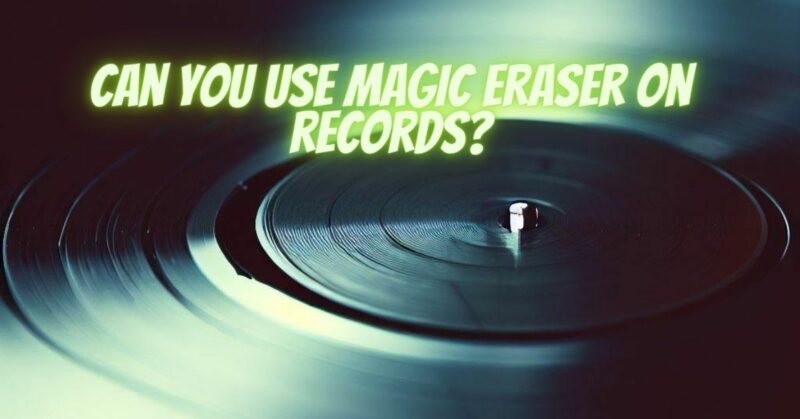As vinyl enthusiasts, we hold our treasured record collections in the highest regard, seeking to maintain their pristine condition for an immersive and captivating listening experience. With the advent of various cleaning methods, including the Magic Eraser, the question arises: “Can you use Magic Eraser on records?” In this article, we delve into the risks associated with using Magic Eraser on vinyl records and explore best practices for safe and effective vinyl cleaning.
Understanding the Magic Eraser:
Magic Eraser is a cleaning product known for its versatility in removing stains and grime from various surfaces. Composed of melamine foam, the Magic Eraser works as a gentle abrasive that can effectively remove stubborn marks and dirt.
Risks of Using Magic Eraser on Records:
While Magic Eraser might seem like a convenient solution for vinyl record cleaning, using it on records poses significant risks:
- Abrasive Nature: The Magic Eraser’s abrasive properties can damage the delicate grooves of vinyl records. Vinyl records are susceptible to scratches, and using an abrasive cleaner like Magic Eraser can irreversibly harm the surface, negatively impacting sound quality.
- Residue Transfer: Magic Eraser can leave behind small particles or residue on the record’s surface. These residues may interact with the stylus, causing additional tracking issues and affecting playback quality.
- Removal of Protective Coating: Some vinyl records have a protective coating that enhances durability and longevity. Using Magic Eraser can strip away this coating, leaving the record more vulnerable to wear and damage.
- Loss of Audio Fidelity: Even if no visible damage occurs, the use of Magic Eraser can lead to a loss of audio fidelity, affecting the record’s ability to reproduce sound accurately.
Best Practices for Vinyl Cleaning:
To preserve the integrity of your vinyl records and ensure a top-notch listening experience, follow these best practices for vinyl cleaning:
- Dust Removal: Start by removing dust and debris from your records using a carbon fiber brush or a microfiber cloth. Avoid using compressed air, as it may force debris further into the grooves.
- Mild Cleaning Solution: Use a gentle and dedicated vinyl record cleaning solution applied with a soft microfiber cloth or a dedicated record cleaning brush. Wipe gently in a circular motion, following the grooves.
- Stylus Cleaning: Regularly clean your turntable’s stylus using a specialized stylus brush or a stylus cleaning solution. A clean stylus ensures accurate tracking and prevents potential damage to your records.
- Storage and Handling: Store your records in protective sleeves and keep them upright to prevent warping. Handle records by their edges to minimize contact with the playing surface.
Seeking Professional Cleaning:
For deeply soiled or damaged records, consider seeking professional vinyl record cleaning services. Professional cleaning methods, such as ultrasonic cleaning, can safely and effectively remove stubborn dirt and contaminants without harming the vinyl.
In conclusion, using Magic Eraser on vinyl records poses substantial risks to their integrity and sound quality. The abrasive nature of Magic Eraser can irreparably damage the delicate grooves of vinyl records, leading to potential audio degradation and playback issues. Instead, opt for gentle vinyl cleaning solutions and best practices to preserve the condition and fidelity of your treasured vinyl collection. By caring for your records with proper cleaning methods and storage practices, you can ensure a captivating and immersive vinyl listening experience, where the melodies of analog music continue to resonate with timeless enchantment. Happy spinning!


